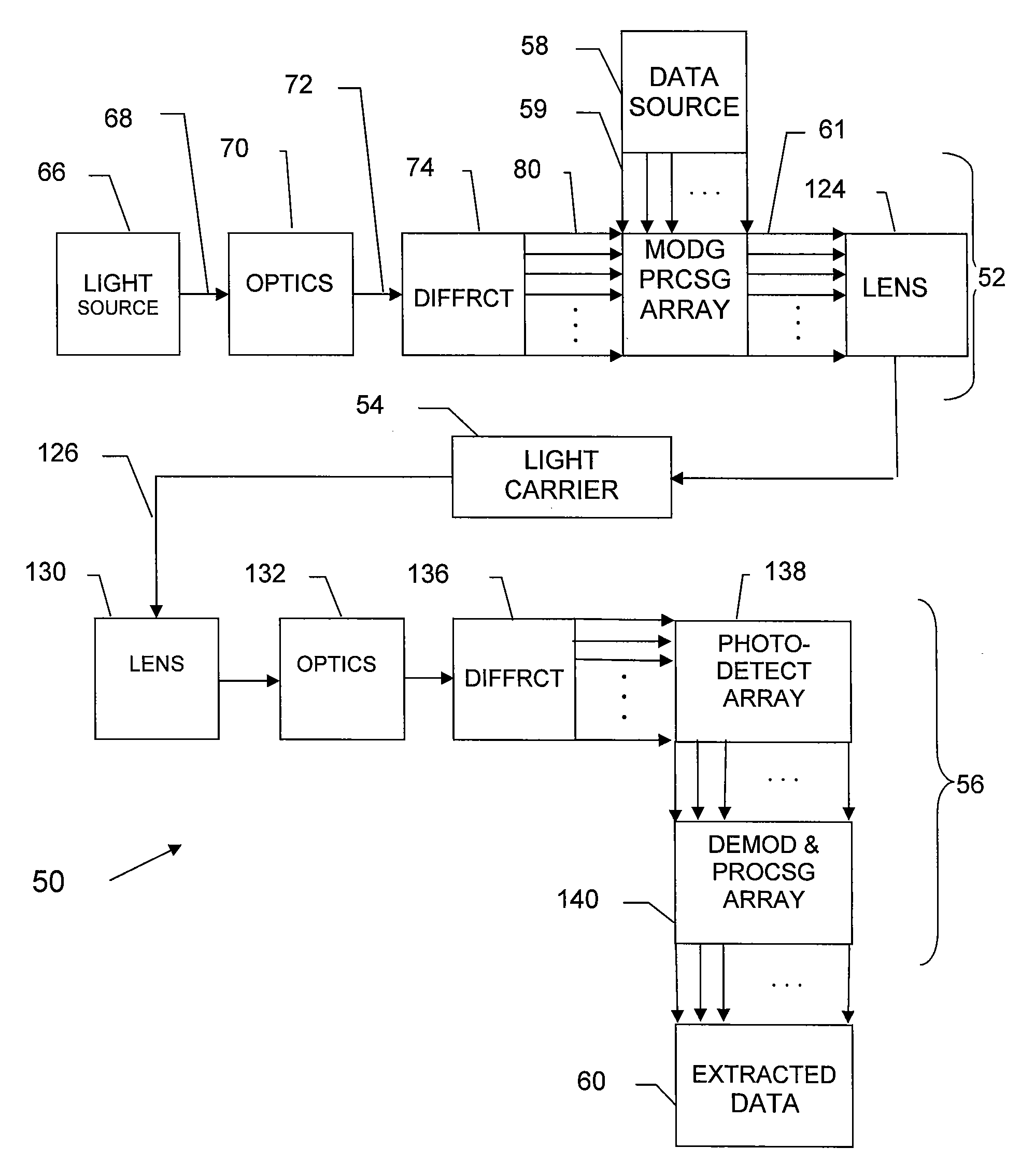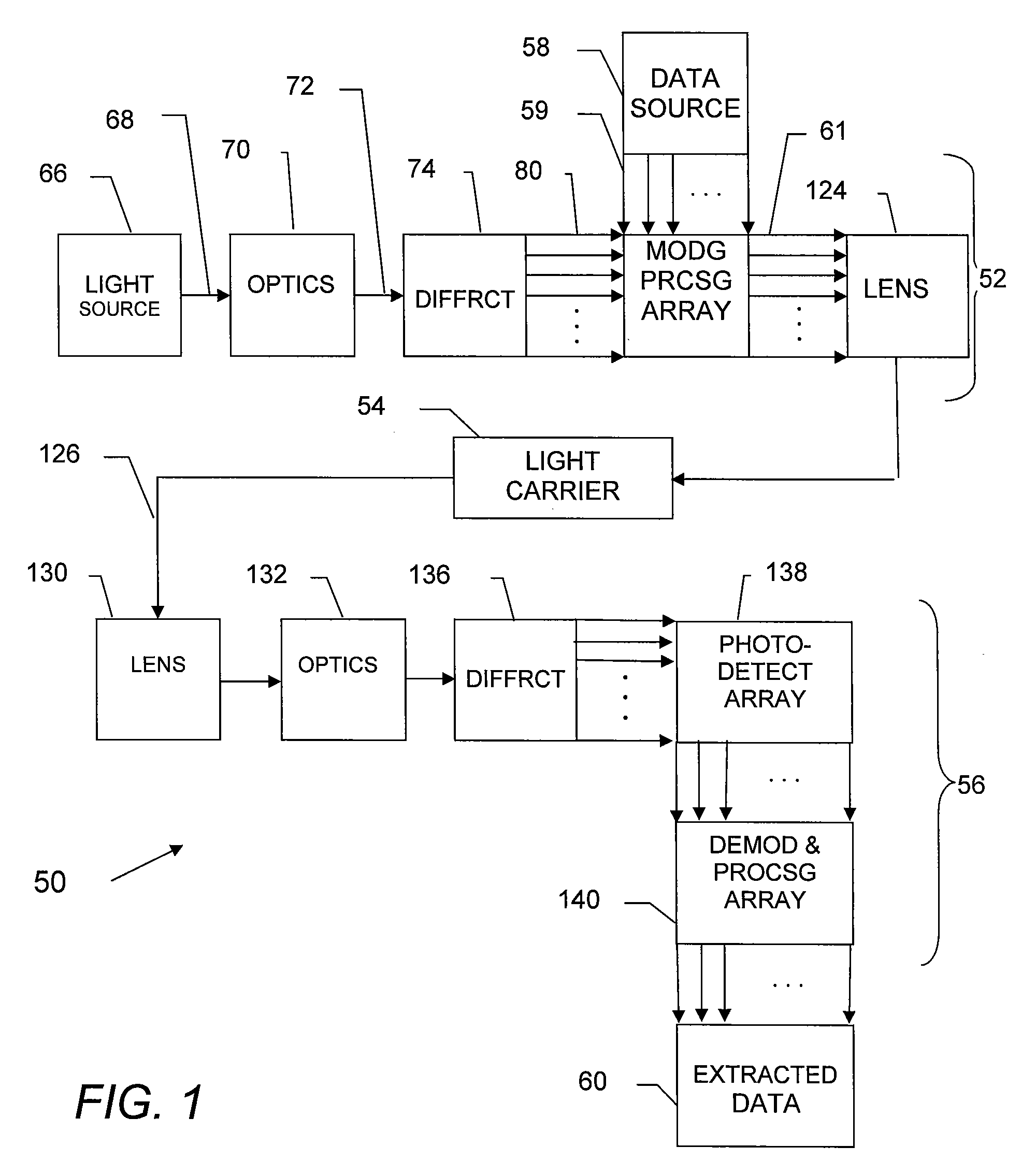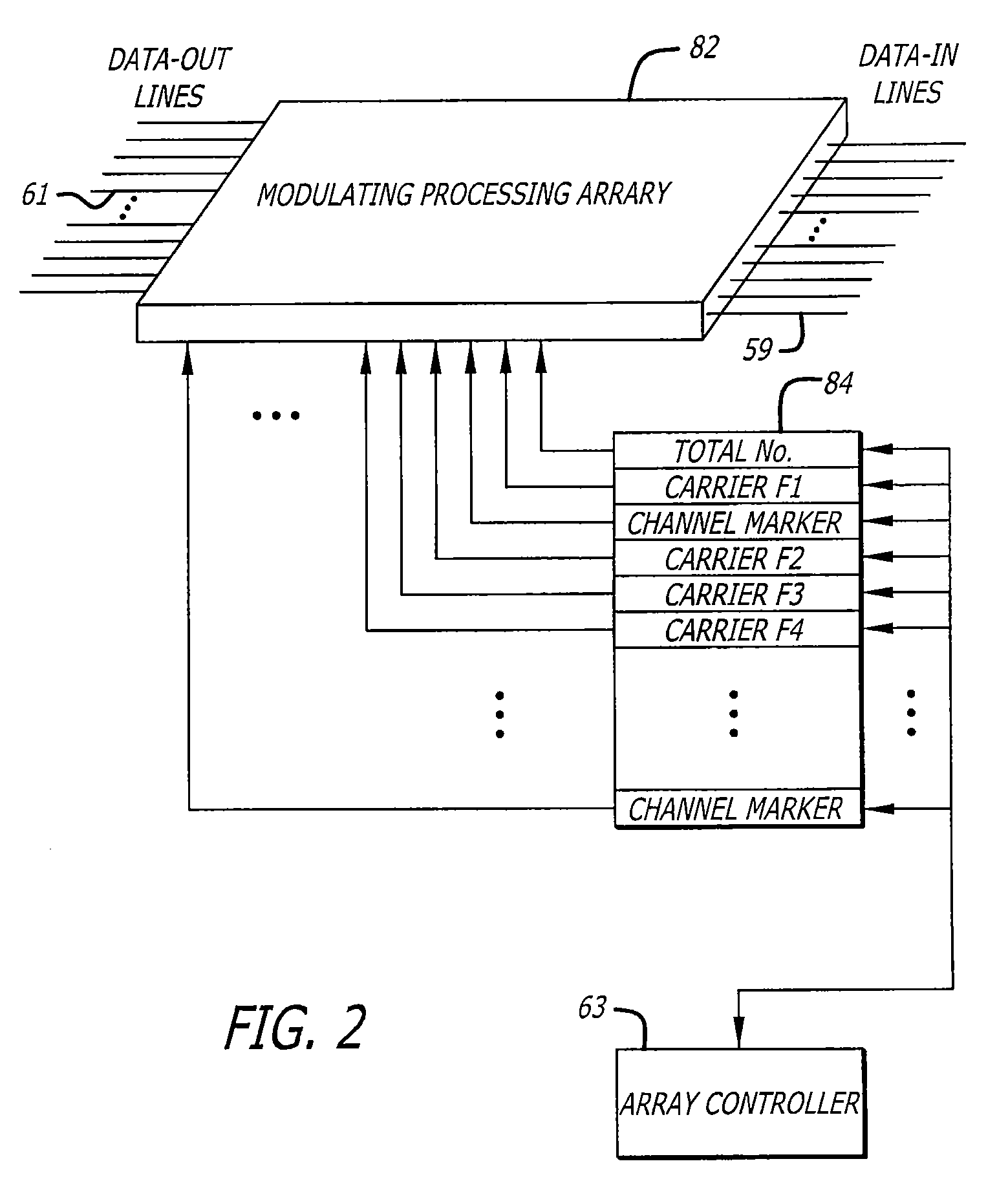High Density Wave Channel Optical Data Communications
- Summary
- Abstract
- Description
- Claims
- Application Information
AI Technical Summary
Benefits of technology
Problems solved by technology
Method used
Image
Examples
Embodiment Construction
[0037]Referring now in more detail to the exemplary drawings for purposes of illustrating embodiments of the invention, wherein like reference numerals designate corresponding or like elements among the several views, there is shown in FIG. 1 an overall system block diagram and flow chart of a high density optical data communication system 50 in accordance with aspects of the invention. The embodiment shown includes a transmitter 52, a light carrier 54, and a receiver 56. In overview, a data source 58 provides data for communication to the receiver 56. The optical data communication system in accordance with the invention provides a system and method for communicating large amounts of that data in parallel optically.
[0038]As used herein, “data” is meant in its broad sense. That is the term “data” is meant to encompass signals, carrier waves or carrier signals, information, digital signals, analog signals, and other information in electrical or optical or other forms.
[0039]While in F...
PUM
 Login to View More
Login to View More Abstract
Description
Claims
Application Information
 Login to View More
Login to View More - R&D
- Intellectual Property
- Life Sciences
- Materials
- Tech Scout
- Unparalleled Data Quality
- Higher Quality Content
- 60% Fewer Hallucinations
Browse by: Latest US Patents, China's latest patents, Technical Efficacy Thesaurus, Application Domain, Technology Topic, Popular Technical Reports.
© 2025 PatSnap. All rights reserved.Legal|Privacy policy|Modern Slavery Act Transparency Statement|Sitemap|About US| Contact US: help@patsnap.com



